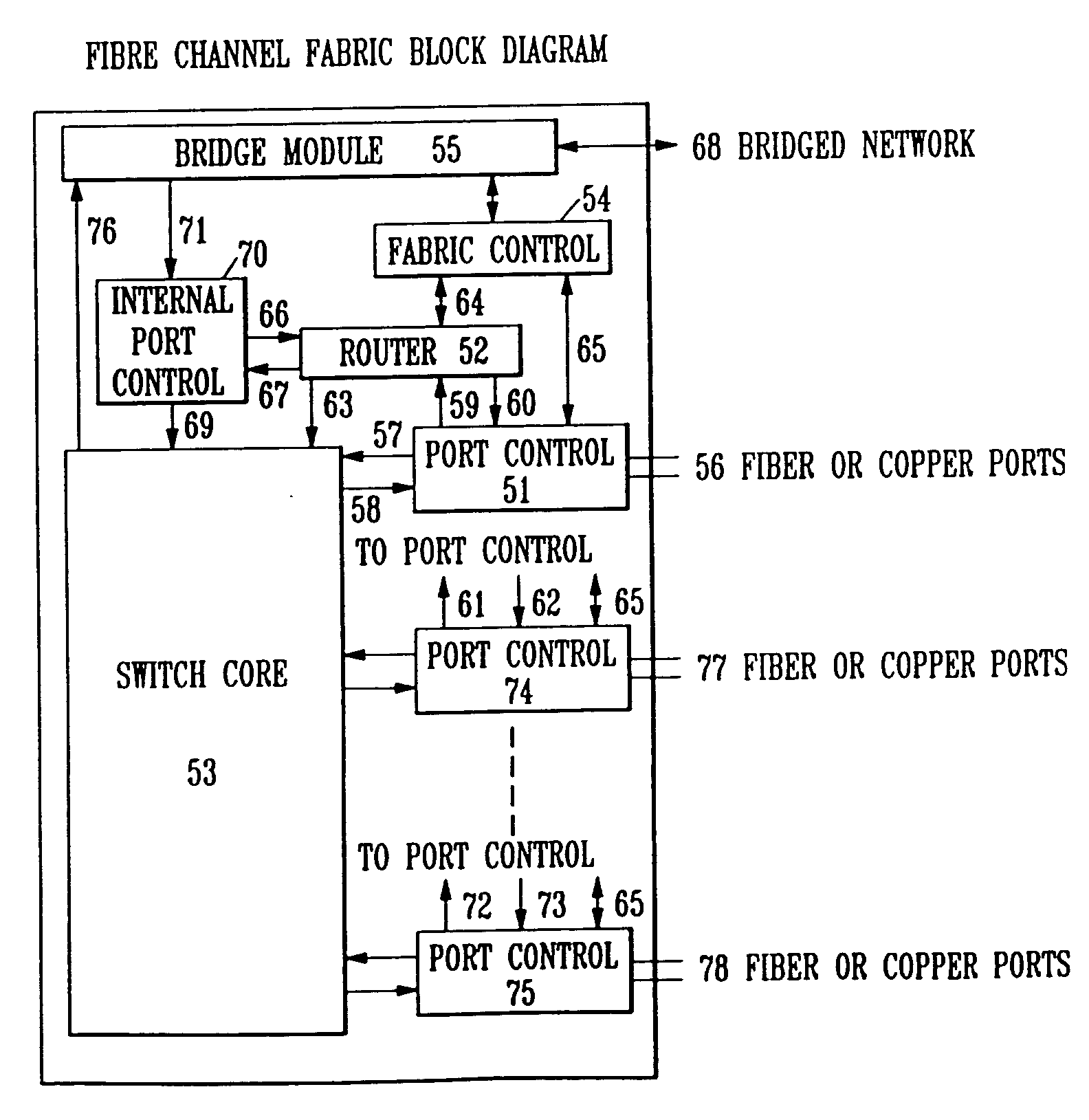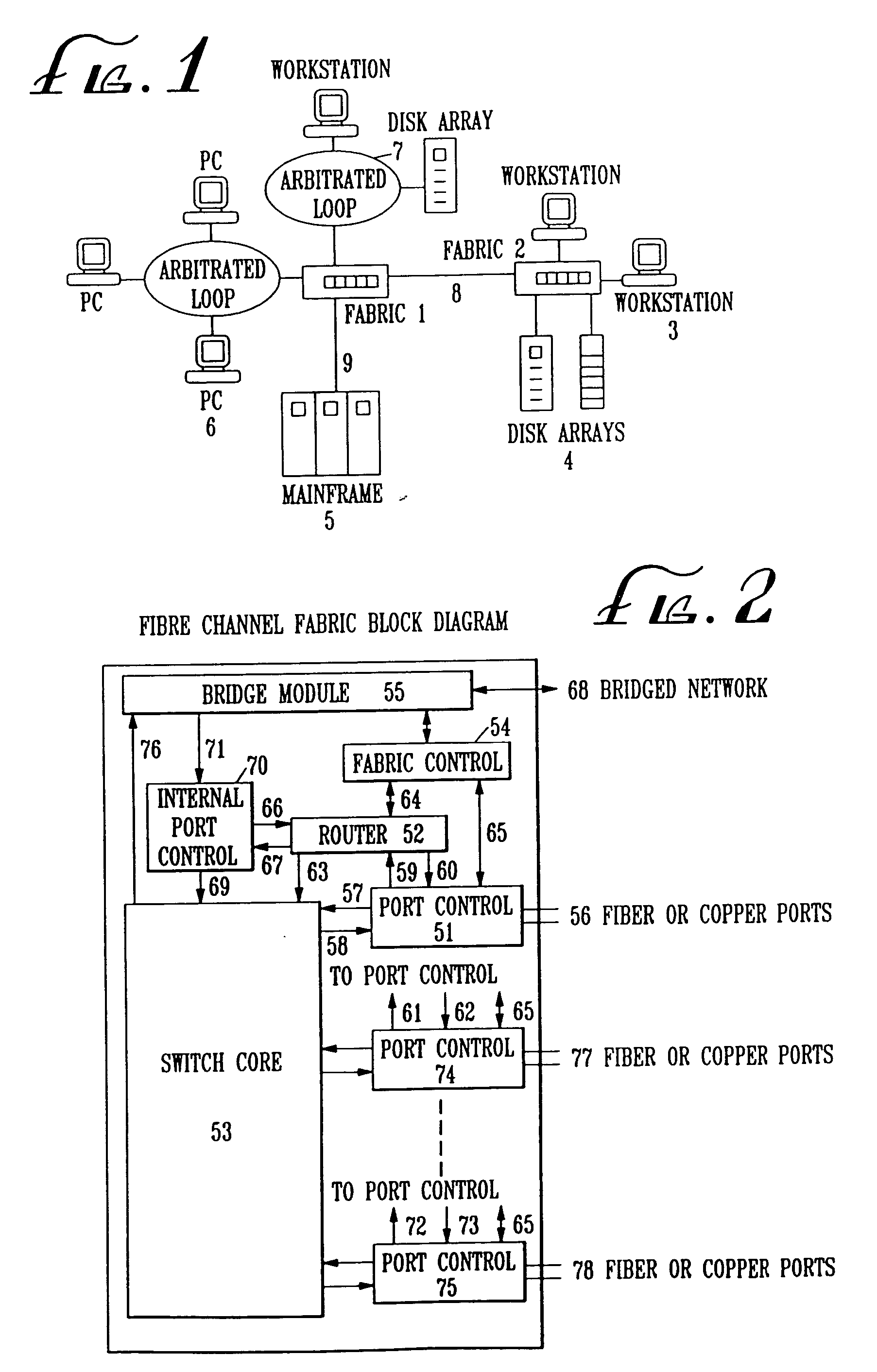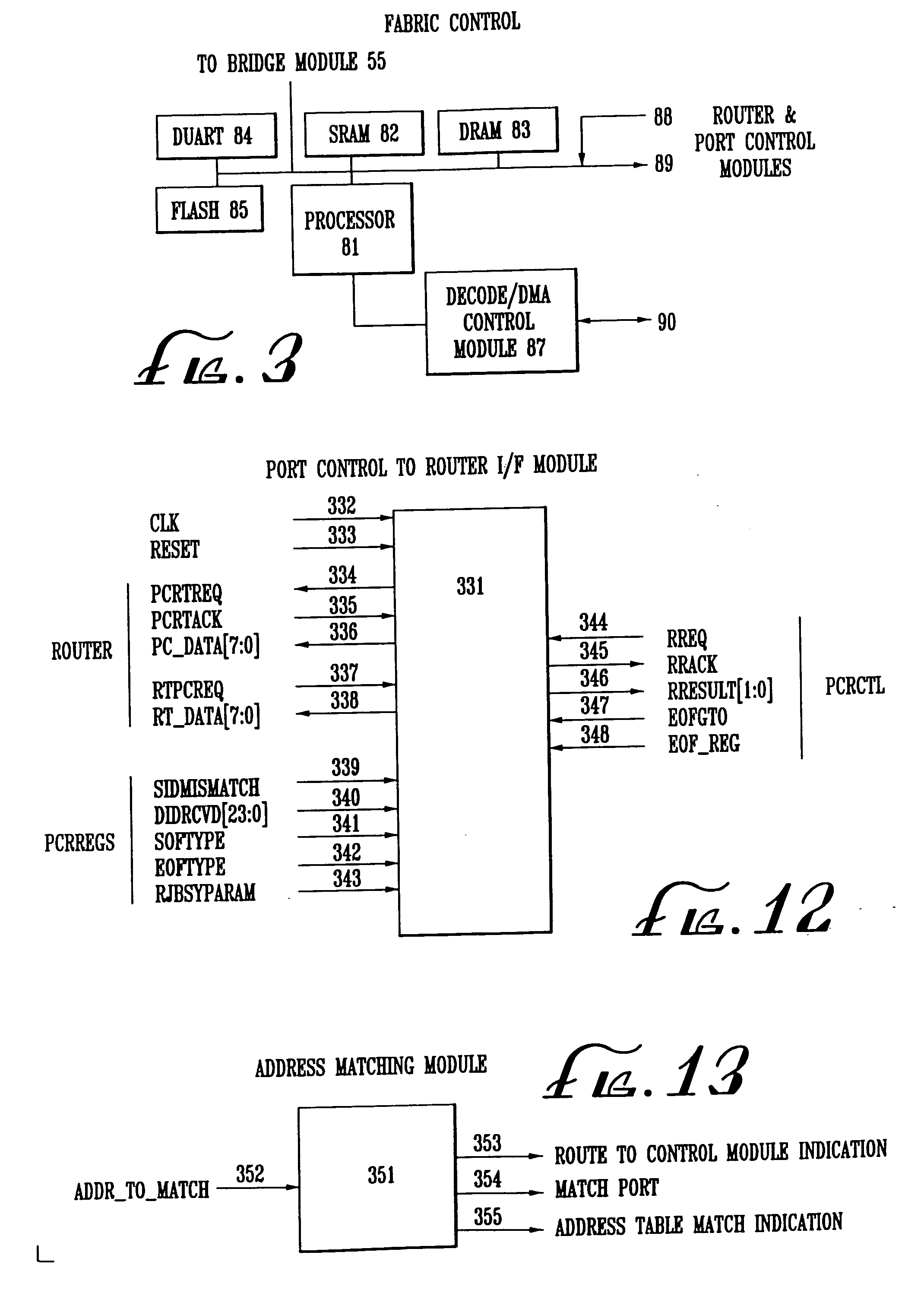Fibre channel switching fabric port control
a fiber channel and fabric technology, applied in data switching networks, fault recovery arrangements, multiplex communication, etc., can solve the problems of difficult implementation of all these network switch features, common limiting factors of computer system performance, and unique problems of fibre channel fabrics
- Summary
- Abstract
- Description
- Claims
- Application Information
AI Technical Summary
Benefits of technology
Problems solved by technology
Method used
Image
Examples
Embodiment Construction
[0066]
TABLE OF CONTENTSA.DefinitionsB.Fibre Channel Fabric ModelC.Fabric Control ModuleD.Fabric Router 1.Port Control Route Request Interface Module 2.Port Control Route Response Interface Module 3.Address Table 4.Address Match Module 5.Blocked Route Request Table 6.Blocked Route Request Port Register Array 7.Blocked Route Request Timer 8.Route Request Unblock Determination Module 9.Route Request Selector10.Route Determination Module11.Route State Table12.Router Statistics Gathering Module13.Router Control FSME.Port Control1.Port Control Module2.FIFO Overrun Prevention Logic3.Processor / Data Arbitration Logic4.Port Control Hub ModuleF.Switch CoreG.Router ModuleH.Other Documents
[0067] A. Definitions
[0068] For expository convenience, the present invention is referred to as the Fibre Channel Fabric or Fabric, the lexicon being devoid of a succinct descriptive name for a system of the type hereinafter described.
[0069] The “Fibre Channel ANSI standard” describes the physical interface, ...
PUM
 Login to View More
Login to View More Abstract
Description
Claims
Application Information
 Login to View More
Login to View More - R&D
- Intellectual Property
- Life Sciences
- Materials
- Tech Scout
- Unparalleled Data Quality
- Higher Quality Content
- 60% Fewer Hallucinations
Browse by: Latest US Patents, China's latest patents, Technical Efficacy Thesaurus, Application Domain, Technology Topic, Popular Technical Reports.
© 2025 PatSnap. All rights reserved.Legal|Privacy policy|Modern Slavery Act Transparency Statement|Sitemap|About US| Contact US: help@patsnap.com



